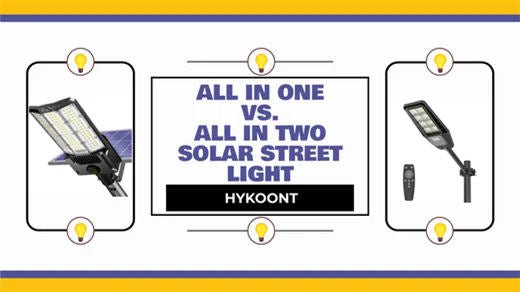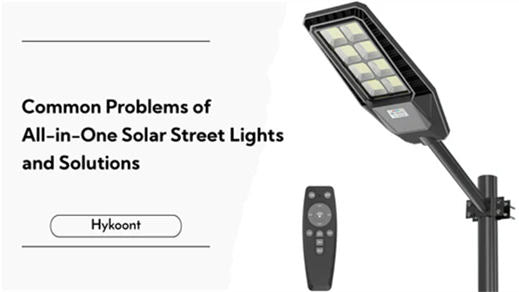Solar street lights have become increasingly popular due to their energy efficiency and environmental benefits. Among the various designs available, two prominent options are the all-in-one (AIO) and all-in-two (AIT) solar street lights. In this comprehensive blog post, we will delve into the features, advantages, and differences between these two designs to help you make an informed decision for your outdoor lighting needs.
All-in-One Solar Street Lights
All-in-one solar street lights integrate all components, including the solar panel, LED lamp, battery, controller, and motion sensor, into a single compact unit. This design maximizes convenience and simplifies installation, making it a popular choice for various outdoor lighting applications.
Key Features:
Compact design with integrated components.
Easy installation without the need for complex wiring.
Motion sensor technology for enhanced energy efficiency.
Typically used in smaller-scale applications such as residential streets, pathways, and parking lots.
Advantages:
- Simplified Installation: AIO solar street lights require minimal installation effort and can be easily mounted on poles or walls.
- Space Efficiency: The compact design of AIO solar street lights saves space and reduces clutter in outdoor environments.
- Energy Efficiency: Integrated motion sensors enable AIO solar street lights to adjust brightness levels based on ambient lighting conditions, maximizing energy savings.

All-in-Two Solar Street Lights
All-in-two solar street lights feature a separated design, with the solar panel and LED lamp connected by a cable. The battery and controller are housed separately, providing flexibility in system configuration and maintenance.
Key Features:
Separate solar panel and LED lamp for increased flexibility.
Modular design allows for easy replacement and maintenance of components.
Suitable for larger-scale installations such as highways, major roads, and commercial areas.
Advantages:
- Enhanced Flexibility: AIT solar street lights offer greater flexibility in system design and configuration, allowing for customized solutions to meet specific project requirements.
- Modular Maintenance: The separated design of AIT solar street lights facilitates easier maintenance and component replacement, reducing downtime and maintenance costs.
- Improved Durability: By separating the solar panel and LED lamp, AIT solar street lights minimize the risk of damage to critical components and enhance overall system durability.

Differences Between All-in-One and All-in-Two Solar Street Lights
Design Complexity:
AIO solar street lights feature an integrated design with all components housed in a single unit, while AIT solar street lights have a separated design with components distributed across multiple units.
Installation Requirements:
AIO solar street lights offer simplified installation with minimal wiring, making them suitable for smaller-scale applications. In contrast, AIT solar street lights may require more complex installation due to the separate components and wiring connections.
Maintenance and Serviceability:
AIO solar street lights may be more challenging to maintain and service compared to AIT solar street lights, as all components are housed in a single unit. AIT solar street lights offer modular maintenance, allowing for easier replacement of individual components.
Conclusion:
Both all-in-one and all-in-two solar street lights offer sustainable lighting solutions for outdoor environments, each with its own set of features and advantages. The choice between these two designs depends on project requirements, installation preferences, and maintenance considerations. By understanding the differences between AIO and AIT solar street lights, you can select the most suitable option to meet your lighting needs effectively.


































Leave a comment
This site is protected by hCaptcha and the hCaptcha Privacy Policy and Terms of Service apply.